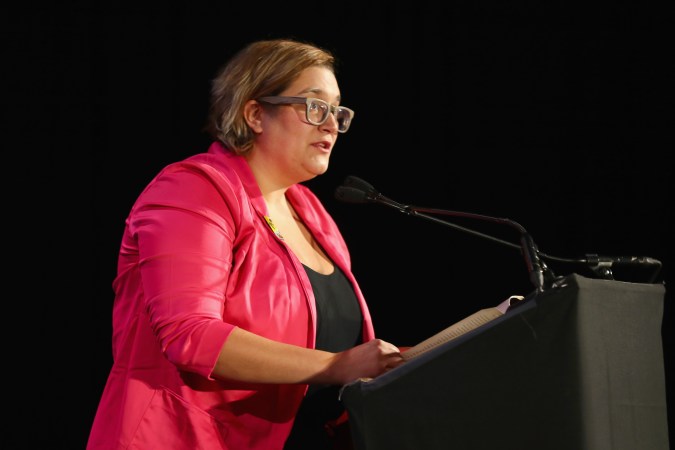There’s nothing conventional about Carmen Maria Machado’s new memoir, In the Dream House. Neither its subject nor its approach is quite like anything that’s ever been published before. Through narrative tropes like erotica, lesbian pulp novel, noir and American Gothic, she recounts the years she spent in a relationship with a woman who was both painfully charming and abusive.
The chaos would drown you if it were not for her masterful ability to bring you up for air at precisely all the right times.
The book’s first act of defiance is its use of the second-person point of view, which I’d like to think begins with the dedication, “If you need this book, it is for you.” What follows is Machado’s portrayal of a dream relationship gone sour, one that sharply objects to common notions of what abusers can look like and the forms abuse can take. The narrative is occasionally punctured by necessary reprieves that come in the form of a brief legal history of documented lesbian abuse, a cultural analysis of queer Disney characters, a sociological take on butchness and masculinity and a meditation on an inappropriate relationship Machado had with a priest in her adolescence. The chaos would drown you if it were not for her masterful ability to bring you up for air at precisely all the right times.
In the chapter “Dream House as Prologue,” Machado references the essay “Venus in Two Acts” by Sidiya Hartman, where the essayist names something called “archival silence.” The concept refers to the lack of stories in official records—sometimes because they were destroyed and other times because they were never told. She imagines this absence as a particularly nefarious form of violence. Machado applies this to the erasure of abuse in lesbian relationships. Willful or not, this omission feeds life into the lie that abusers are always men and the myth of lesbian relationships as inherently safe.
Machado’s retelling of her relationship with the woman from the Dream House is not an exercise in catharsis nor is it a cautionary tale. By the end, there is no particular lesson Machado hopes the reader walks away with. To her, the story’s principal value lies in its material existence. The story is subversive simply because it was uttered. “I enter into the archive that domestic abuse between partners who share a gender identity is both possible and not uncommon, and that it can look something like this,” she writes. “I speak into the silence. I toss the stone of my story into a cast crevice; measure the emptiness by its small sound.”


When Machado first meets the woman from the Dream House, she is intoxicated by the idea that all the things she thought she could never have were being offered to her by a person she thought could never want her back. But the woman is almost immediately smitten by her. She desperately wants Machado’s body and soon claims to love her, openly and unabashedly. In the chapter “Dream House as Luck of the Draw,” Machado writes, “Part of the problem was, as a weird fat girl, you felt lucky. She did what you’d wished a million others had done—looked past arbitrary markers of social currency and seen your brain and ferocious talent and quick wit and pugnacious approach to assholes.” The problem that the author describes, however, is that the nameless woman likely chose her because of these things rather than in spite of them.
The act of telling a story like this one cannot possibly be simple.
At her best, the woman is kind, attentive and loving—the kind of partner who washes your dirty clothes for you because you saw dozens of spiders in the laundry room and freaked. “Sometimes when you catch her looking at you, you feel like the luckiest person in the whole world,” Machado writes. But at her worst, she’s manipulative, spiteful and at times physically abusive. In “Dream House as House in Florida,” Machado remembers confronting her partner about an earlier event in which she gripped her arm so tightly that it bruised. “Her expression is flat for a half-second before her chin begins to tremble,” she writes. “‘I’m so sorry,’ she says. ‘I didn’t mean it. You know I love you, right?’” And so the cycle goes: abuse, followed by apology, followed by abuse, followed by apology, followed by abuse. “Sometimes when you catch her looking at you, you feel like the most scrutinized person in the world,” she writes in a later chapter.
For people whose narratives are already starved of visibility, the act of telling a story like this one cannot possibly be simple. Because inevitably, to some, the image of a lesbian woman who maims and destroys will only serve to confirm their belief that all lesbian women are depraved and destructive. “If your family found out they’d probably think it proved every idea they’ve ever had about lesbians,” writes Machado. “And you wish she was a man because then at least it could reinforce ideas people had about men.” But Machado’s work wouldn’t be what it is—unbridled, transgressive and necessary—if she eschewed the things that are not so easy to name in favor of the simple.





